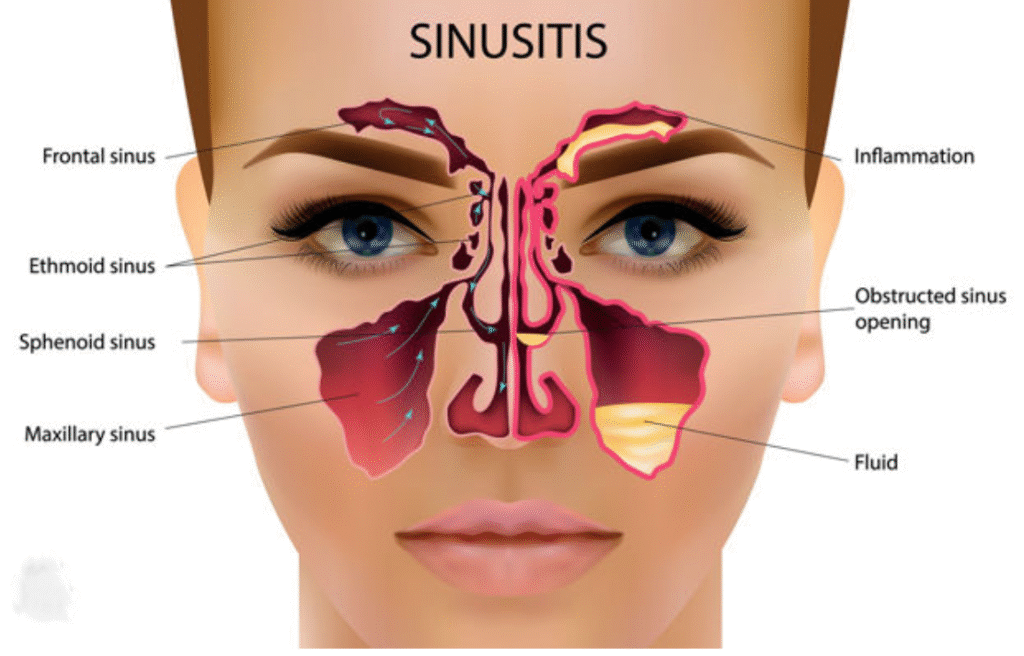
Sinusitis (also known as a sinus infection) is an inflammation or swelling of the tissue lining the sinuses. Normally, sinuses are filled with air, but when they become blocked and filled with fluid, germs can grow and cause an infection.
Types of Sinusitis
- Acute Sinusitis
- Duration: Less than 4 weeks
- Cause: Often due to a common cold or upper respiratory tract infection
- Symptoms: Facial pain or pressure, nasal congestion, nasal discharge, loss of smell, cough
- Subacute Sinusitis
- Duration: 4 to 12 weeks
- Often follows: An acute sinus infection that doesn’t fully resolve
- Chronic Sinusitis
- Duration: More than 12 weeks
- May be caused by: Infection, nasal polyps, or deviated septum
- Symptoms: Similar to acute but last longer and may be less intense
- Recurrent Sinusitis
- Several episodes of acute sinusitis within a year
Causes
- Viral infections (most common)
- Bacterial infections
- Fungal infections (rare; more common in immunocompromised individuals)
- Allergies
- Nasal polyps
- Deviated nasal septum
- Environmental irritants (e.g., smoke, pollutants)
Symptoms
- Facial pain/pressure
- Nasal stuffiness and discharge
- Loss of smell
- Headache
- Fever
- Cough
- Bad breath
- Fatigue
- Tooth pain (especially upper teeth)
Diagnosis
- Based on symptoms and physical exam
- Nasal endoscopy (to look inside sinuses)
- Imaging (CT scan or MRI in complicated or chronic cases)
- Nasal culture (if infection is resistant or unusual)
Treatment
Acute Sinusitis
- Often resolves on its own
- Supportive care:
- Nasal saline sprays or rinses
- Decongestants (short-term)
- Pain relievers (ibuprofen, acetaminophen)
- Antibiotics (only if symptoms persist >10 days or worsen)
Chronic Sinusitis
- Nasal corticosteroids
- Allergy treatment (if allergies contribute)
- Surgery (e.g., functional endoscopic sinus surgery) in resistant cases
Prevention
- Manage allergies
- Avoid smoking and pollutants
- Use a humidifier
- Practice good hygiene
- Treat colds promptly



